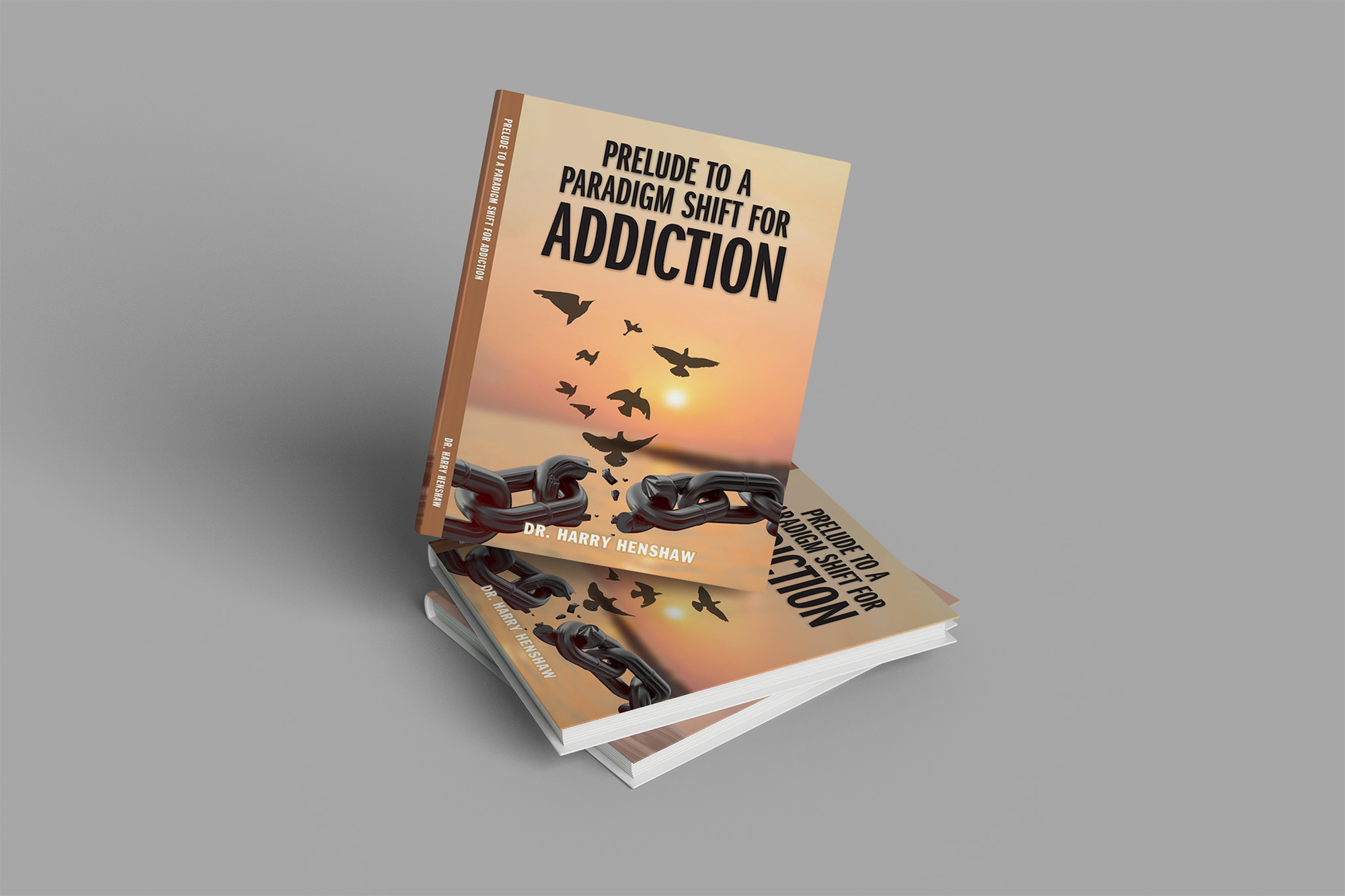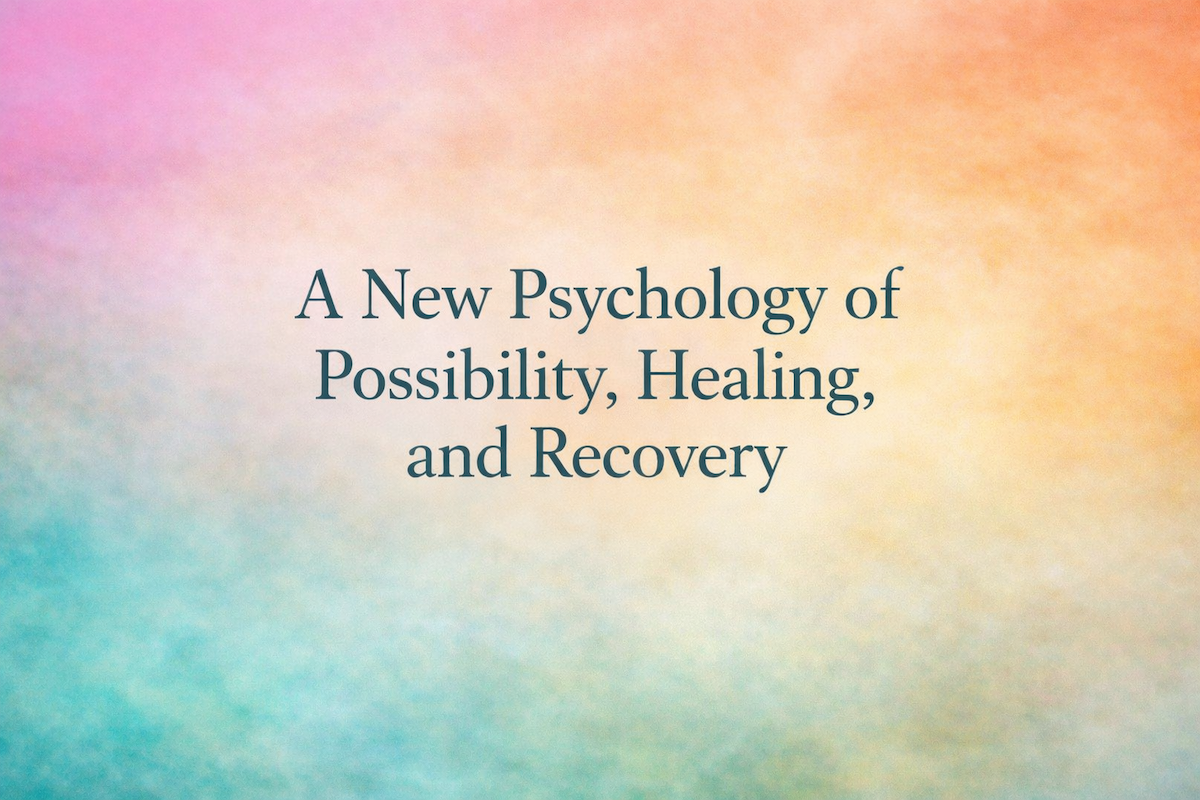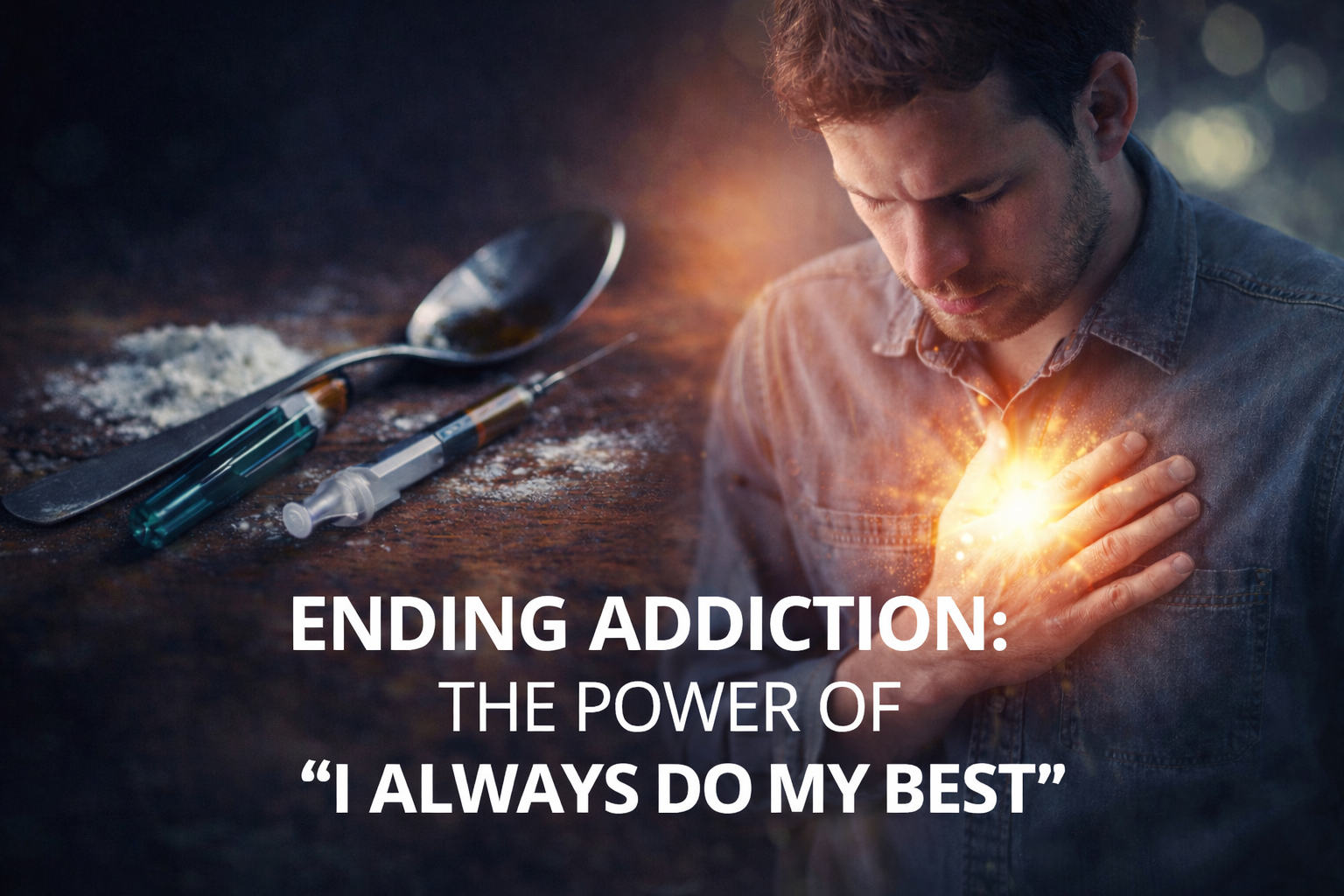Table of Contents
- Addiction Is Not About Substances
- The Root Cause: A Negative Self-Image
- The Demand Is Psychological, Not Physiological
- Thoughts Create Reality
- The Power of Self-Image
- Understanding Self-Esteem
- Why Addictive Behavior is Self-Destructive
- Addictive Behavior as Avoidant Behavior
- The Consequences of Negative Self-Perception
- Why Most Treatment Programs Fail
- A New Hypothesis: Self-Image Is the Cause and the Cure
- Self-Image Is Transformable
- Conclusion: The True Path to Recovery
Chapter Four of Prelude to a Paradigm Shift for Addiction confronts the addiction treatment world with a radical but urgently necessary revelation: the true problem behind addiction is not drugs, alcohol, pharmaceutical companies, or even brain disease. It is a distorted self-image and the destructive thoughts that individuals carry about their own value and worth.
In this blog post, I explore the core insights presented in Chapter Four, which build on previous chapters’ critiques of the dominant addiction paradigm. This chapter identifies the actual root of addictive behavior—an internal condition of the mind—and proposes a revolutionary shift in focus: away from external substances and toward healing the inner self.
Addiction Is Not About Substances
The addiction crisis continues to devastate individuals and families, but much of our focus is misplaced. We concentrate on controlling supply—cracking down on drug dealers, limiting prescriptions, or demonizing substances. While these measures may reduce availability, they do nothing to address the real cause of demand.
Substances are not inherently addictive. They become a problem only when an individual uses them repeatedly to avoid emotional pain. The supply of drugs and alcohol only exists because there is demand—and that demand is fueled by the individual’s psychological and emotional suffering. Until we address the internal cause of that demand, no amount of control over supply will solve the problem.
The Root Cause: A Negative Self-Image
The real issue is the individual’s perception of themselves—their self-image. Addiction is not born from chemical dependency but from a core belief that one is not good enough, not worthy, or fundamentally flawed. This negative self-image creates emotional pain, and substances are used as a means to escape that pain.
Dr. Maxwell Maltz, in Psycho-Cybernetics, argued that an individual’s self-image defines what they believe they are capable of doing, being, or becoming. When that self-image is distorted—when a person sees themselves as inadequate—they unconsciously sabotage their lives to confirm that belief. Addiction is one of the most destructive forms of this self-sabotage.
Self-image influences self-esteem. A negative self-image creates low self-esteem, which triggers feelings of despair, hopelessness, and emotional pain. Drugs and alcohol then become coping tools—temporary anesthetics used to avoid the intense discomfort generated by one’s thoughts.
The Demand Is Psychological, Not Physiological
In economic terms, addiction is driven not by supply but by demand. The real demand comes from the addict or alcoholic’s desire to numb themselves from their internal suffering. If demand disappears, supply becomes irrelevant.
Yet, treatment systems largely ignore this inner world. They pathologize addiction as a brain disease, ignoring the individual’s capacity for choice, responsibility, and transformation. The disease model promotes helplessness. In contrast, understanding addiction as ideational—rooted in thoughts and beliefs—invites empowerment.
Thoughts Create Reality
Cognitive psychology emphasizes that our thoughts shape our emotions and behavior. We do not feel bad because of external events—we feel bad because of how we interpret and think about those events. This is especially true in addiction.
If a person believes they are broken, that belief will produce painful emotions. Over time, those emotions become intolerable. To cope, the person turns to substances. But the real solution lies not in managing the emotion with drugs or alcohol, but in changing the thought that created the emotion in the first place.
As Louise Hay wrote, “What we think about ourselves becomes the truth for us.” Change the thought, and the feeling changes. Change the feeling, and the behavior follows. This is the pathway out of addiction.
The Power of Self-Image
Self-image is the foundation of our identity. It shapes what we believe we deserve, how we treat ourselves, and what we allow ourselves to experience in life. Maltz described it as the internal blueprint that governs all behavior. If we see ourselves as failures, we will unconsciously act in ways that lead to failure. If we see ourselves as victims, we will attract circumstances that reinforce that identity.
For addicts and alcoholics, the self-image is often dominated by a single destructive belief: “I am not good enough.” This belief colors every experience, infects every decision, and sabotages every opportunity. It leads to self-hatred, which then fuels the use of substances to numb the pain.
Understanding Self-Esteem
Self-esteem is the kinesthetic experience of self-image. It is the emotional response we feel in our bodies based on what we believe about ourselves. A positive self-image creates a sense of confidence, worth, and self-respect. A negative self-image produces shame, anxiety, and despair.
When a person’s self-image says, “I’m worthless,” their self-esteem plummets. They feel pain in their body—a heaviness, a tightness, a darkness. That pain becomes unbearable, and substances seem like a quick fix. But the real issue is the thought that generated the pain.
To heal addiction, we must help individuals change the way they see themselves. We must help them create a new self-image based on truth, worthiness, and love.
Why Addictive Behavior is Self-Destructive
When a person believes they are unworthy, they act accordingly. They neglect their health. They sabotage their relationships. They engage in risky behavior. They use substances that harm their bodies and minds. This self-destruction is not accidental—it is a logical outcome of a toxic self-image.
Nathaniel Branden, a pioneer in self-esteem psychology, observed that low self-esteem often leads to behaviors that are destructive—even fatal. Addiction, he argued, is one of the most common manifestations of unresolved internal pain. When someone doesn’t believe they deserve happiness, they will find a way to destroy it.
Addictive Behavior as Avoidant Behavior
Addiction is not about chasing pleasure—it is about avoiding pain. Specifically, it is about avoiding the emotional pain caused by negative self-perception. When sober, the addict feels the full weight of their self-judgment. When using, they feel temporary relief.
This avoidance creates a cycle: negative thoughts cause emotional pain; the pain leads to substance use; the use temporarily numbs the pain but ultimately reinforces the negative self-image. Over time, the person becomes trapped in this loop.
The way out is to face the pain, not avoid it. This requires courage—but more importantly, it requires a new way of thinking.
The Consequences of Negative Self-Perception
Negative self-image doesn’t just lead to addiction—it affects every area of a person’s life. It impacts their relationships, finances, physical health, and mental well-being. A person who believes they are inadequate will:
- Neglect their physical health.
- Undermine their career or education.
- Settle for unhealthy relationships.
- Reject love, success, and joy.
And worst of all, they may see no way out. This hopelessness is what fuels chronic addiction—and why many individuals relapse even after treatment.
Why Most Treatment Programs Fail
The vast majority of treatment programs fail to address the root cause of addiction. They focus on symptom management—detox, relapse prevention, medication-assisted treatment—but not on the individual’s thoughts, beliefs, or self-image.
Most programs operate from an external locus of control. They attribute addiction to trauma, environment, genetics, or a diseased brain. They do not teach clients how to take responsibility for their thoughts or transform their inner narrative.
As a result, clients leave treatment with the same toxic self-image they came in with. They may be sober, but they are still suffering. And that suffering eventually leads them back to substance use.
A New Hypothesis: Self-Image Is the Cause and the Cure
Chapter Four proposes a transformative hypothesis: the cause of addiction is internal, not external. It is rooted in a negative self-image and the resulting poor self-esteem. Healing addiction requires changing how individuals think about themselves.
The new paradigm begins with this truth: thoughts matter. Beliefs shape behavior. Change your thinking, and you change your life.
This is not a simplistic idea. It is backed by decades of psychological research and clinical experience. CBT, REBT, and other modalities have proven that thought transformation leads to emotional and behavioral change. What has been missing is applying this principle consistently and courageously to the treatment of addiction.
Self-Image Is Transformable
The most hopeful message of this chapter is that self-image can be changed. No one is doomed to a lifetime of addiction. Regardless of age, history, or current circumstances, individuals can transform their self-image—and in doing so, transform their lives.
As Dr. Maltz wrote, “You are never too young or too old to change your self-image and thereby start to live a new life.”
Addiction is not a sentence. It is a symptom. And the cure is within reach—for those willing to look inward and do the work of healing.
Conclusion: The True Path to Recovery
Chapter Four of Prelude to a Paradigm Shift for Addiction invites us to reconsider everything we think we know about addiction. It shifts the focus from substances to self-image, from disease to disempowerment, from helplessness to hope.
The real problem behind addiction is not outside the individual. It is inside—hidden in the thoughts they think about themselves. These thoughts create emotional pain, and that pain drives addictive behavior.
The solution is not external. It is not found in pills, programs, or platitudes. It is found in a new way of thinking—a new belief in one’s worth, value, and potential. It is found in the transformation of the self-image.
Addiction recovery is not about abstinence—it is about awakening. It is about reclaiming responsibility, rewriting inner narratives, and rediscovering self-love.
Let us stop asking what substances people use and start asking what they believe about themselves. Let us stop treating symptoms and start healing hearts. Let us usher in a new paradigm—one where recovery is not only possible but inevitable for those willing to transform.
Dr. Harry Henshaw is a licensed mental health counselor and the author of Prelude to a Paradigm Shift for Addiction. With over 40 years of experience, Dr. Henshaw specializes in transformational counseling, focusing on self-image, self-esteem, and the power of personal responsibility in healing addiction.
Dr. Harry Henshaw

Get Free from Addiction!
Discover a groundbreaking perspective on addiction recovery. Click below to buy Prelude to a Paradigm Shift for Addiction and explore innovative solutions to transform the way we understand and treat substance use disorders.
About Enhanced Healing
Enhanced Healing Counseling specializes in addiction recovery, mental health, and self-esteem support. Offering online and in-person services, we empower individuals to transform their lives with personalized care and proven therapeutic methods.




